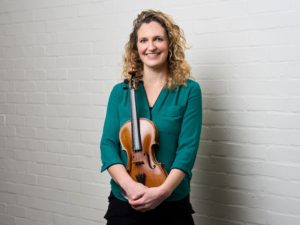programme notes
Anderson The Waltzing Cat
Leroy Anderson (1908-1975)
The Waltzing Cat
Composed in 1950, Leroy Anderson’s light orchestral piece The Waltzing Cat is among a collection of his most charming works.
As with many of Anderson’s short light orchestral works, there is a fully-realised character throughout the piece. Anderson’s extensive use of percussion is also a highlight of the piece, especially in the central section that sees whistle slides, wood blocks and triangles used. Set in a waltz style, The Waltzing Cat opens with a string introduction before the main melody begins.
The percussion helps keep time here, with the strings and woodwind interlocking themes. The tempo picks up somewhat as the music heads into the central section. There are also more percussion and brass parts here to signify the shift in the theme. A sweet woodwind and percussion interlude ensues, with the comedic whistle slide and woodblock leading the way.
A short reprise of the opening material leads the orchestra back into the main theme of the piece. Again led by the strings, the woodwinds decorate the melody more for this last time. There is a sense of warmth in the way Anderson writes the concluding section as the ensemble comes together for the final comedic flourish.
© Alex Burns
Parker Mississippi Five, ‘Les Animaux’
Jim Parker
Mississippi Five
‘Les Animaux’
Jim Parker’s Mississippi Five is an inventive 1920s-style suite, featuring tributes to the likes of King Oliver and Bessie Smith.
Paul Rissmann Stan and Mabel
Saint-Saëns Carnival of the Animals, ‘Final: Molto Allegro’
Camille Saint Saëns (1835-1921)
Sponsors
Leader sponsored by Debbie Beckerman & Keith Jones
Leader sponsored by Anonymous
Co Leader sponsorship vacant
First Violin 3 sponsored by Liz and Alistair Milliken
First Violin 4 sponsored by John and Rosalind Crosby
First Violin 5 sponsored by Christine Robson
First Violin 6 sponsored by Della Brotherston
First Violin 7 sponsorship vacant
First Violin 8 sponsorship vacant
Principal Second Violin sponsored by Geoffrey Shaw
Second Violin 2 sponsored by The Angel Family
Second Violin 3 sponsored by Keith Ball
Second Violin 4 sponsored by Alastair Fraser
Second Violin 5 sponsorship vacant
Second Violin 6 sponsored by Catherine Shaw
Principal Viola sponsored by Mark and Vanessa Petterson
Co Principal Viola sponsored by Raymond Calcraft
Viola 3 sponsored by Gill Cox
Viola 4 sponsored by Stuart & Joyce Aston
Principal Cello sponsored by Anonymous
Co Principal Cello sponsored by Jeffrey and Sophie Prett
Cello 3 sponsored by Gillian Noble
Cello 4 sponsored by Richard Morgan
Cello 5 sponsored by Colin and Helen Snart
Principal Double Bass sponsored by John Clarke
Co Principal Double Bass sponsored by The Bristow Family
Principal Flute sponsorship vacant
Sub Principal Flute sponsored vacant
Principal Oboe sponsored by Pat Sandry
Co Principal Oboe sponsored by Sean Rourke
Sub Principal Oboe sponsored by Geoffrey & Joy Lawrence
Principal Clarinet sponsored by Derek and Deirdre Lea
Sub Principal Clarinet sponsored by Graham Harman
Principal Bassoon sponsored by Sandra and Anthony Linger
Sub Principal Bassoon sponsored by Barbara Tower
Principal Horn sponsored by Chris Harman
Sub Principal Horn sponsored by Julia James
Principal Trumpet sponsored by Ishani Bhoola
Sub Principal Trumpet sponsored by Cynthia Harrod-Eagles
Principal Trombone sponsorship vacant
Sub Principal Trombone sponsorship vacant
Principal Timpani sponsored by Cynthia Harrod-Eagles
Principal Percussion sponsorship vacant



